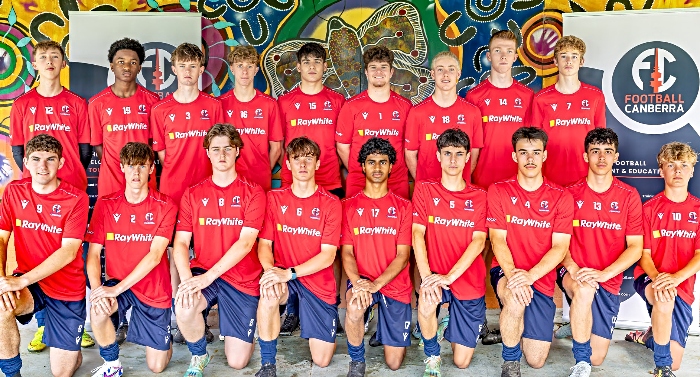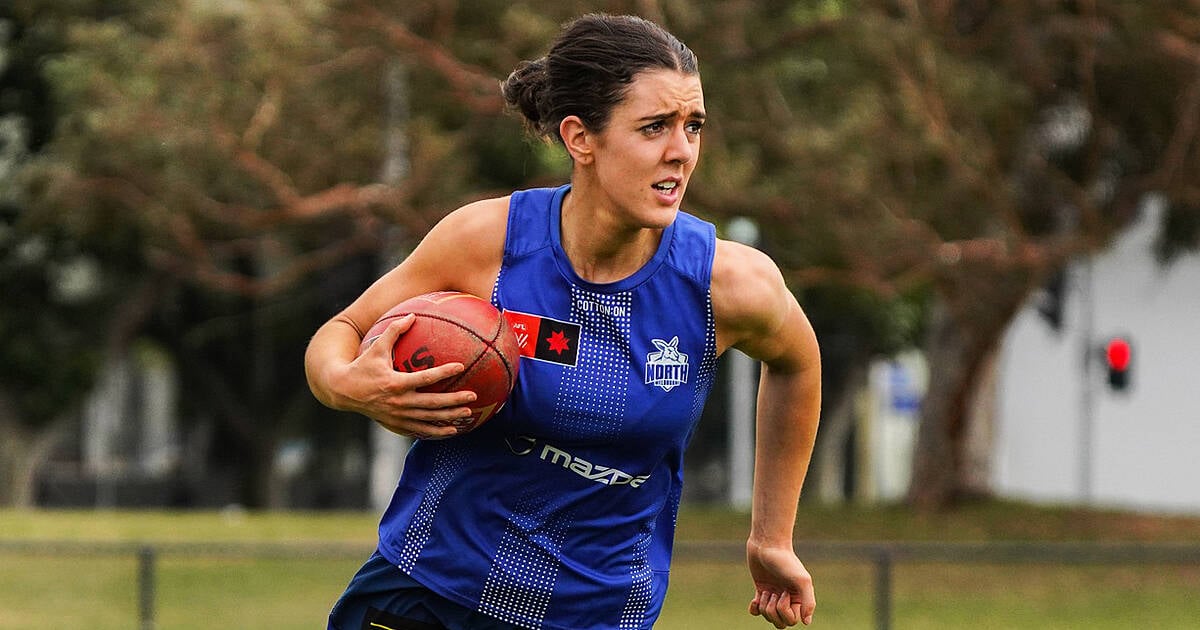Flying blind: How West Coast’s ‘gypsies’ laid the foundation for future AFL dominance

- by Admin
- July 18, 2024

In many respects, West Coast really was ‘flying blind’ when it came to its inaugural season in 1987.
Following the move of South Melbourne to Sydney, the Eagles, along with the Brisbane Bears, were the faces of the then-VFL’s expansion into new markets as the league tried to establish a foothold across the nation.
While the Western franchise quickly became on- and off-field powerhouses, like any start-up, the initial steps were wobbly.
Initially, they were feared and despised by both sides of the country: The Victorian clubs – many in woeful financial shape – were worried the VFL was creating a monster in launching what they viewed as almost a Western Australian ‘State of Origin’ side. The West Australian Football League (WAFL), meanwhile – whose clubs were also on financial tenterhooks – feared they would wither on the vine, thanks to the Eagles joining the biggest game in town.
However, on October 1, 1986, after much analysis and fierce debate from football powerbrokers across the country, the VFL Board of Directors announced teams from WA and Queensland would enter the league in 1987.
That meant both entities had about six months to build clubs from scratch.
RELATED: How the ‘bad news Bears’ somehow defied the odds
Build they did, and while Brisbane struggled in its debut season, finishing second last, West Coast swiftly proved themselves as a club to be respected, and, very shortly after, feared. The Eagles, as they were nicknamed, finished with an impressive 11-11 first-season record in 1987, missing the finals by just one win and percentage.
However, that immediate competitiveness belied the club’s inexperience and naivety when it came to the rigours of the new-look VFL competition.
Ross Glendinning – who moved home to Perth to captain the club after a storied North Melbourne career which included a Brownlow Medal in 1983 to go alongside two club best and fairest awards – remembers the travel factor being a huge hurdle to overcome, especially with not much known at the time when it came to recovery, nutrition and sport science.
“We hadn’t really experienced all the travel before,” Glendinning told Zero Hanger‘s AFL Team Builders podcast.
“We mainly played on Saturdays, either at home or away, and when we travelled, it’d be a late afternoon flight on Friday, and we’d get into Melbourne at 9.30 or 10pm. We’d get into our hotel opposite Princess Park, have something to eat, go for a bit of a walk around in the darkness, go to bed, wake up and go to whatever ground we were playing at. Then we’d fly home straight after the game.


“It was all new to us. We didn’t have a dietitian, so all that was very grey – we were treading a very fine line in terms of getting enough sleep, and our recovery.
“On the flights home, quite often it happened that our ruckman – Laurie Keene, who was about six foot eight – if he had a corky, he’d have to lie down at the back of the plane in the aisle, and our head trainer Billy Sutherland would have to find some ice for him. He’d actually go around finding ice from our drinks and put it in a bag to use as an ice pack.
“That didn’t preclude some of the boys, and I could’ve been guilty of this too, of wanting to use the ice for a sneaky drink. But that’s how it was back then – it was our relaxation. And in those days, we weren’t that professional, we were still really just amateurs.”
West Coast was officially born as a club on October 30, 1986, but WA football had for many years pondered joining the VFL. The WA-based league, and many of its clubs, were financially unstable, many of the state’s best players were heading east every year, and it was apparent the VFL had eyes on a national league.
In mid-1983, the WA Government appointed a taskforce to investigate the long-term financial health of football in the state, which resulted in the formation of an independent body of directors to oversee control of the game. During this time, John Walker, the eventual inaugural CEO of West Coast, was hired to be the WAFL’s first chief executive.
“The WAFL back then were pretty broke, and they went to the [state] government to get some money to survive,” Walker said. “That led to the creation of a [WA] football commission, and I was appointed as the first CEO of the WAFL.
“I remember on Day 1 there was a bit of paper that had 8 KPIs on it and one was a simple one-liner: get Western Australia into the national competition. That was in 1983, and it [gaining a VFL license eventually] happened in ’86. I was involved in working through the process, negotiating the deal and creating the entity.
“It [joining the VFL] was always being talked about, because WA clubs weren’t doing well financially and being stripped every year of their best players. Just before the creation of the Eagles, there were over 70 WA players playing in the VFL. So it was a dire situation and they needed support.
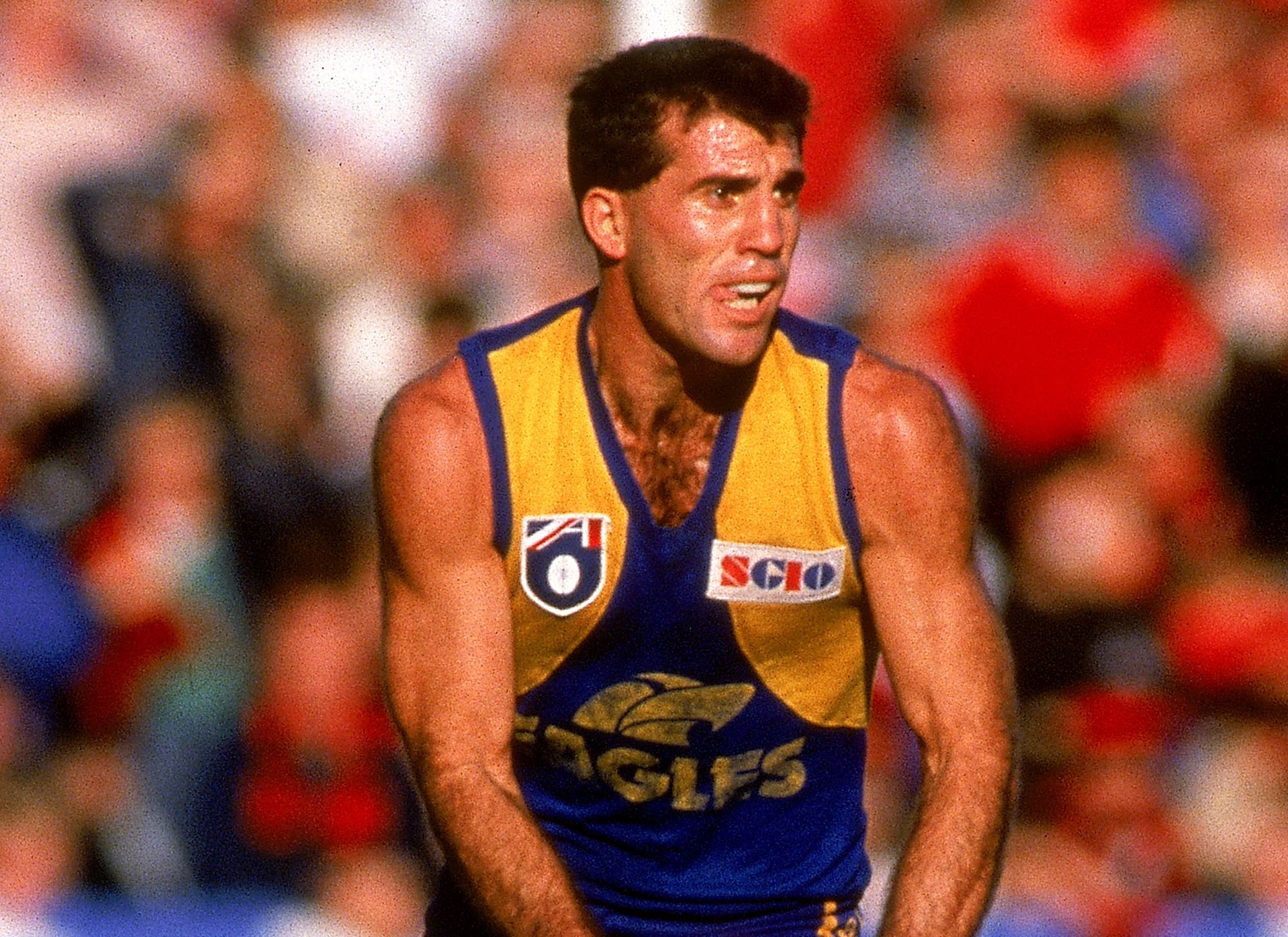

“The first job was to make the WAFL a bit more financially sustainable, so we worked on that. Then it was about creating connections in Victoria and the so-called power brokers.
“Then there was a committee that carried out a feasibility study; it was about exploring options, and the option of what we see now [the formation of West Coast] was not the only one – there were other options such as relocating a [VFL] team, and a breakaway movement talked about at the time from the more powerful clubs in the VFL.
“Ultimately, WA was forced to pay $4.5 million to gain entry and that was calculated on the basis that the whole VFL was valued at just $50m – you had to buy your entry.
“Then it was [early] October, the week after the Grand Final, that the invitation formally came. And we then had until March to get a football team off the ground, get a structure in place, get the right people, get the money to pay the license fee, plus finding players and everything else that goes with it.
“It was such an exciting challenge.”
It was most definitely a challenge, but Walker and his few off-siders at the new club knuckled down and found a way to make it happen. Their to-do list included recruiting players, signing a coach and administration staff, organising facilities and much more.
“I remember walking out of the WAFL [offices] with a typewriter under one arm and my secretary with me – we were the first employees,” he says.
“Then we had to find football managers, marketing people, administration, finance … it was a huge challenge. But recruiting was probably the most challenging, trying to find players to come back from Victoria, and we actually weren’t that successful. I think we got just four players back, and we’d lost 27 or 28 players to Victoria that summer, so it was a challenge across the board.”
West Coast was given exclusive access to players from the WAFL to form its 35-man inaugural squad, but was excluded from the National Draft. The club was also permitted to sign up to six players from rival VFL clubs, but Glendinning, Phil Narkle (St Kilda) and Dean Turner (Fitzroy) were the only three to head west.
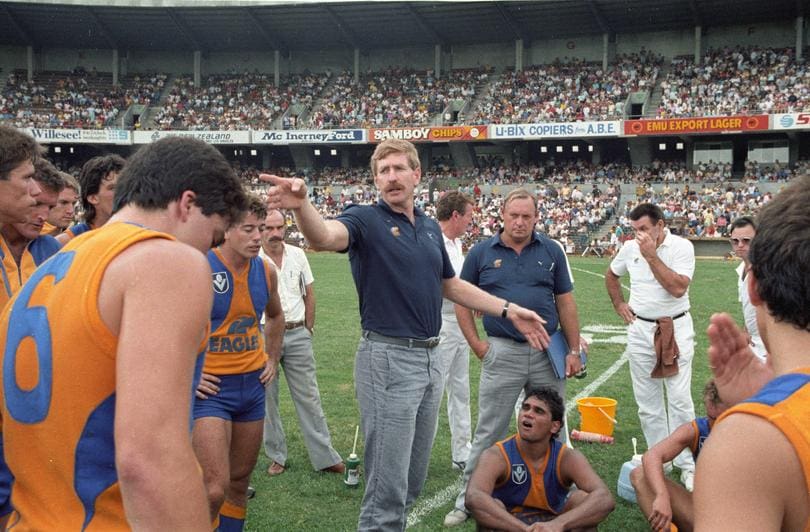

For Glendinning, joining the newly formed outfit was a simple decision.
“In short, it was mid-1986 and Richard Colless [West Coast’s inaugural chairman] rang me and said ‘there’s a group of businessmen putting some finances together for a license to allow a team to enter the VFL,” Glendinning said.
“I’d been at North Melbourne [almost] 10 years and [my wife] Kerry and I were thinking about heading home to Perth anyway, and I was thinking about playing for East Perth, where I’d played before going to North Melbourne.
“Richard asked me to get together some of the [WA] expats living in Melbourne to see whether they’d be interested in being involved with the new team. I think we had about 24-odd there, and we met at the Sheraton Hotel in the city. Richard went through the pros and cons, the likelihood of it happening and so forth.
“A few of the players were a bit unsure about it all, but I was very keen to go home. And Richard said ‘if you did, we’d like to make you captain’ and within a few weeks, we shook hands and it was done.
“I was very fortunate that it came to fruition and I got another two years of VFL footy.”
At that stage, the club had no permanent home or training ground, and their equipment was packed in the back of a van and transported by a property steward to whatever ground was available. It wasn’t an ideal environment for coach Ron Alexander, a famous WA football name who had enjoyed immense WAFL success as both player and coach, as well as playing 133 senior VFL games for Fitzroy.
“We weren’t allowed to even train at Subiaco Oval – we weren’t even allowed to share half the ground with the Subiaco Colts,” Alexander recalls.
“These were the sorts of things we didn’t get much cooperation on. We didn’t have a place to train but that was fine, what I said to the players was ‘all you need is grass to train on – I didn’t offer them any excuses.”
Glendinning remembers the players embracing their nomadic existence through the first pre-season.
“We trained at various grounds – we’d drive there, and our property man would have his van and he’d bring some jumpers and we’d basically get changed in our cars,” he said.
“We couldn’t penalise anyone for being late to training because sometimes we didn’t know within 24 hours where we were going to be training!
“We’d train late afternoons because most of the guys were working, or at uni, in those days. We’d train at Mount Lawley Teachers College … or McGillivray Oval, which was near the ocean and bloody windy, so it made you really hone your skills. Then there was Guildford Grammar, and East Perth’s ground too, and Aquinas College at one stage.
“We became gypsies really, but we became closer as a squad because we had to gather together. Some of the lads didn’t have cars, so you were picking up the guys who didn’t have cars, and we just found a way to make it work.”
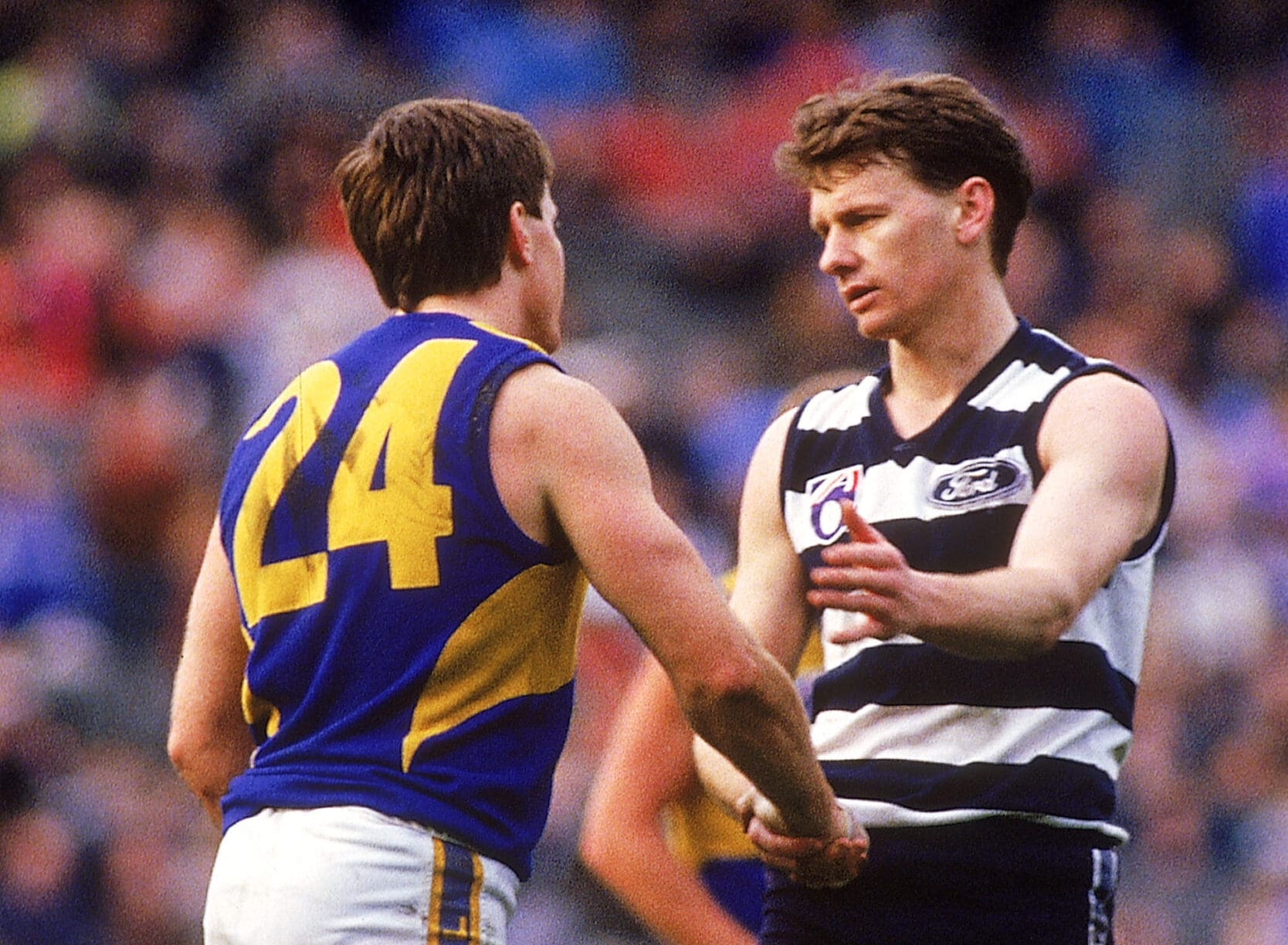

Make it work they did, somehow, with the Eagles producing what can only be described as a hugely impressive debut season, splitting their 22 games 11-11, missing finals by just a solitary victory. It was the building blocks for a sustained period of success both on the playing field and in the boardroom.
Just five short years later, the Eagles stunned the footy world by claiming their first premiership in 1991, with wingman Peter Matera inspiring a brilliant come-from-behind win against Geelong. They would double their tally two years later, and, suddenly, those fears that the VFL had created a monster had been realised.
For the full story of how the Eagles came to be, watch or listen to the AFL Team Builders podcast, which goes into further detail in areas such as:
- How the Eagles almost missed the boat completely, with South Australia initially favoured to join Brisbane in the VFL in 1987
- How the club chose its nickname, colours and theme song
- Ron Alexander’s fear the Eagles may not even make the starting line for the 1987 season
- More details surrounding the inaugural list build
- The build-up to the Eagles’ debut game against Richmond at Subiaco Oval
- A distasteful spitting incident during the Eagles’ first away game against Essendon at Windy Hill.
The Latest News
-
December 27, 2024Why Kyrgios believes an Australian champion will emerge from the Brisbane International
-
December 27, 2024Australia’s Scott Boland strikes late to heap pressure on India in fourth Test
-
December 27, 2024India lose five after Smith century puts Australia in charge of fourth Test
-
December 27, 2024Smith praises Konstas courage as Australia in command
-
December 27, 2024Tsitsipas looks for a fresh start at Aus Open following stagnant year – Neos Kosmos

